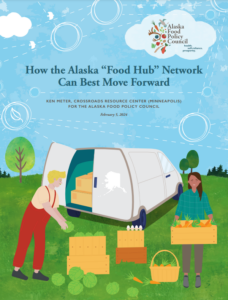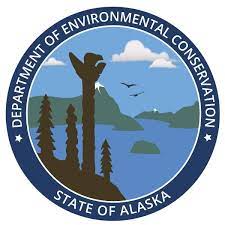
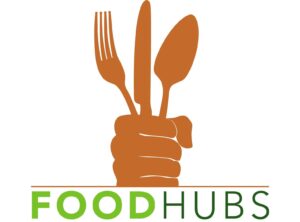
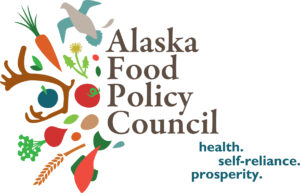

The USDA Local Food Promotion Program (LFPP) “funds projects that develop, coordinate, and expand local and regional food business enterprises that engage as intermediaries in indirect producer-to-consumer marketing to help increase access to and availability of locally and regionally produced agricultural products.” In autumn 2022, AFPC was awarded an 18-month USDA Local Food Promotion Program planning grant titled Alaska Food System Research and Knowledge Sharing: Growing Connections for Local Food. The project has three objectives:
- Convene the Alaska Food Hubs Working Group;
- Create the Recommendations Report and Operations and Safety Manual; and
- Provide peer-to-peer learning opportunities.
Ken Meter’s Recommendations Report (February 2024) can be found here
In January 2023, AFPC convened an “Alaska Food Hubs Working Group” to focus on improving, supporting, and connecting food hub operations statewide and within regions. The monthly meetings continued throughout the year and encouraged knowledge sharing and building trust between members. In July, the group of six existing food hubs welcomed three emerging food hubs from across the state. Group members attended the 2023 Alaska Food and Farm Festival. They participated in the Food Hub Track, which included sessions about State and Federal regulations and grant opportunities, other food hub networks, Alaskan local food infrastructure and retail, and more. Working group members presented at the well-attended “Alaska Food Hub Showcase,” and Ken Meter, author of the Alaska Food Hub Recommendations Report, facilitated an effective discussion at “Next Steps for the Alaska Food Hub Network.”
The Alaska Food Hub Working Group members also informed the production of the Operations and Safety Manual. The six existing food hubs shared their current manuals, and the group performed a comprehensive review of nationwide food hub manuals and reports. Working group members also shared their unique experiences operating in their local contexts through monthly discussions and one-on-one interviews with project partner Lorinda Lhotka of the State of Alaska Department of Environmental Conservation – Food Safety & Sanitation Program.
The Operations and Safety Manual highlights best practices for food hubs in a format that makes information accessible to emerging food hubs and relevant to Alaska’s context. The goals of the Operations and Safety Manual are to:
- foster better food safety outcomes;
- improve collaboration, operations, and knowledge sharing;
- support sales of local food;
- and movement of local food throughout Alaska.
The USDA defines a food hub as “a business or organization that actively manages the aggregation, distribution, and marketing of source-identified food products primarily from local and regional producers to strengthen their ability to satisfy wholesale, retail, and institutional demand.” This definition is tied to an organization’s activities, not its structure, which is reflected in the food hubs currently operating in Alaska. Four of the six existing Alaskan food hubs are projects of non-profit organizations. One is a for-profit company and the other is a consumer-owned cooperative. Only two of the organizations call themselves a food hub. This term has become something of a buzzword in food systems, but, as determined by the 2021 National Food Hub Survey Report, only about half of the 107 respondents confirmed that they consistently refer to themselves as “food hubs” (though 80% of organizations use the term at least some of the time). Respondents avoid the term because their organizations have a broader focus, find the term confusing to consumers, and fear limiting funding opportunities due to the perception that food hubs are known to fail.
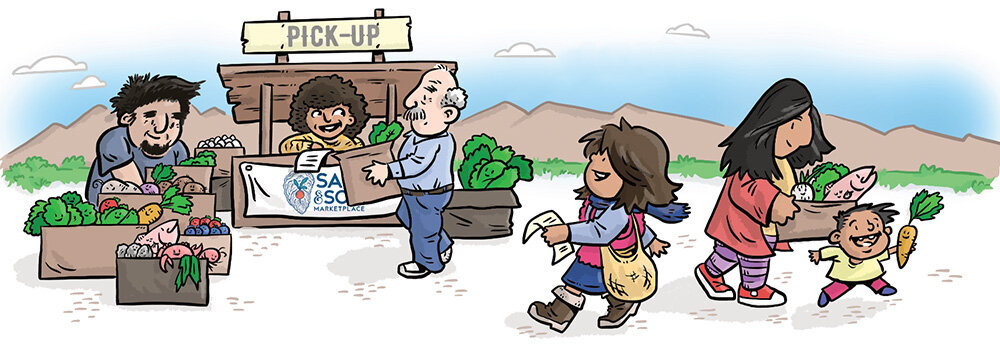
IMAGE: https://www.saltandsoilmarketplace.com/
The Alaska Food Hub Working Group discussions reflect these concerns with terminology. While members agree that “food hub” is a convenient label by which to convene the working group, it is not broadly used by their organizations. Food hubs in Alaska focus on filling their community’s needs, which includes being a central location for training and increasing production as well as the aggregation and distribution of food and products. Most food hubs use an online marketplace to connect producers and consumers in ways appropriate to the organization. In general, most of the organizations participating in the working group are non-profits or have a social enterprise component, working to feed underserved communities and improve health. Food hubs gift and share food directly into the community (such as Alutiiq Grown paying producers with grant funding and distributing food for free to Tribal Elders) and others have programs that allow customers to order food to be donated through the platform (Arctic Harvest Deliveries and Salt & Soil Marketplace).
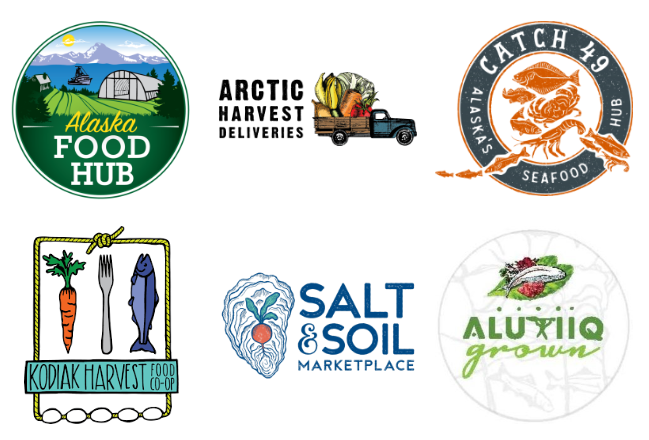
| Entity | Year – operational | Geographic Focus | Services Provided | Stated Mission |
| Alaska Food Hub | 2016 | Kenai Peninsula – Homer, Anchor Point, Soldotna, Ninilchik, Seldovia | Online ordering, Aggregation, transportation, education; no permanent location/ storage – delivery vehicle | strengthen the local economy, increase food security; reduce the carbon footprint |
| Arctic Harvest Deliveries | 2017 | Anchorage, Eagle River, Wasilla, Girdwood; wholesale statewide | Online ordering, aggregation, transportation, processing; cold storage, warehousing, and delivery vehicles | source high quality, local products for everyone from chefs and produce managers, to individual customers.; help expand market opportunities for local farmers |
| Catch49 | 2011 – limited, pop-ups about 3-4 times annually; 2018 retail and regular sales | Anchorage, Fairbanks | Online ordering, brick and mortar store, cold storage, transportation, limited processing | “boat to plate” approach ensuring high-quality, responsibly harvested AK seafood, caught and processed by Alaskans |
| Kodiak Harvest Food Co-op | 2021 | Kodiak (city) | Online ordering, brick and mortar (2022); cold storage, warehouse; aggregation | full service grocery store emphasizing locally harvested seafood and produce, supplemented with regionally sourced goods |
| Salt & Soil Marketplace | 2017 | Juneau, Haines; interest in serving more rural communities | Online ordering; no brick and mortar; delivery, aggregation, shared cold storage | connects Southeast Alaska food consumers with growers, fishermen, foragers, and gardeners through an online community marketplace |
| Qik’rtaq Food Hub – Alutiiq Grown | Summer 2022 | Native villages of Kodiak, Larson Bay, Ouzinkie, Old Harbor, Port Lions | Online ordering, transportation, aggregation; hydroponics; free food to village residents; may sell extra to Co-op | Increase the region’s food security through providing fresh and local foods to Elders and community residents |
Emerging Alaskan Food Hubs (that we know about!):
The food hubs included in the Alaska Food Hubs Working Group operate mostly in Southcentral and Southeast Alaska. As new and emerging food hubs begin operating across the state, the diversity of operations, definitions, and goals will continue to grow. This manual attempts to stay flexible by sharing best practices and safety information that can fit within Alaska’s diverse context.
